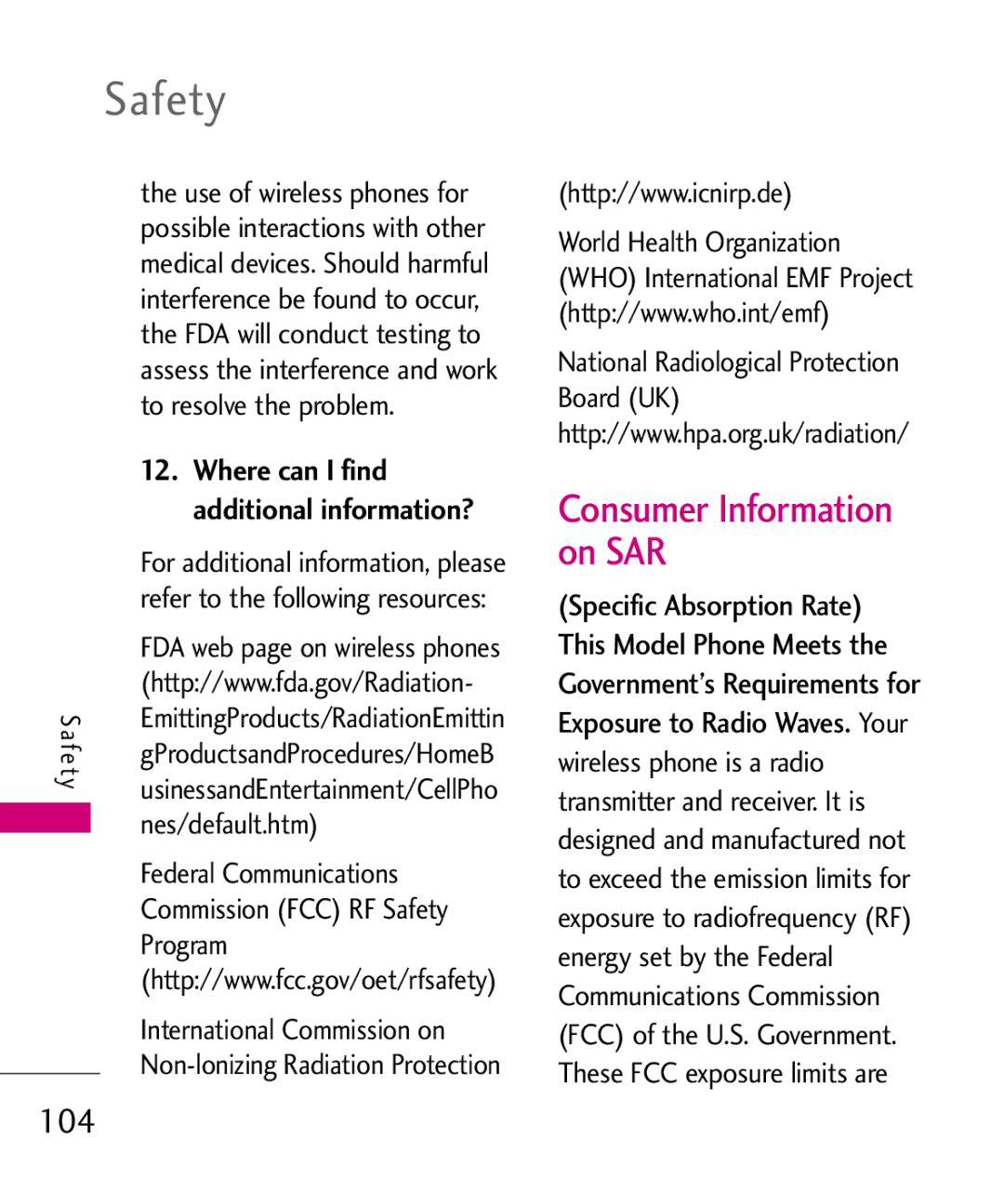Safety
the use of wireless phones for possible interactions with other medical devices. Should harmful interference be found to occur, the FDA will conduct testing to assess the interference and work to resolve the problem.
12. Where can I find
| additional information? |
| For additional information, please |
| refer to the following resources: |
| FDA web page on wireless phones |
| (http://www.fda.gov/Radiation- |
S | EmittingProducts/RadiationEmittin |
a f e | gProductsandProcedures/HomeB |
ty | usinessandEntertainment/CellPho |
| |
| nes/default.htm) |
| |
| Federal Communications |
| Commission (FCC) RF Safety |
| Program |
| (http://www.fcc.gov/oet/rfsafety) |
| International Commission on |
|
(http://www.icnirp.de)
World Health Organization (WHO) International EMF Project (http://www.who.int/emf)
National Radiological Protection Board (UK) http://www.hpa.org.uk/radiation/
Consumer Information on SAR
(Specific Absorption Rate) This Model Phone Meets the Government’s Requirements for Exposure to Radio Waves. Your
wireless phone is a radio transmitter and receiver. It is designed and manufactured not to exceed the emission limits for exposure to radiofrequency (RF) energy set by the Federal Communications Commission (FCC) of the U.S. Government. These FCC exposure limits are
